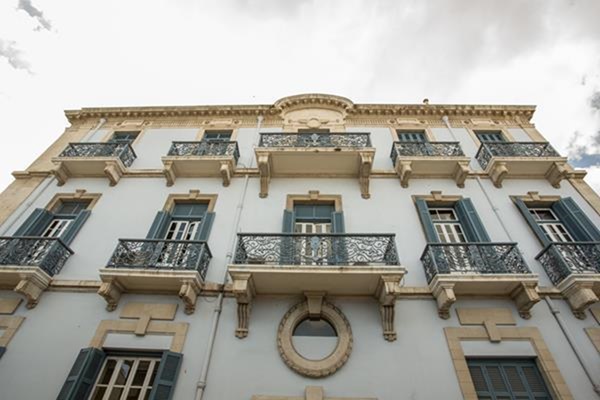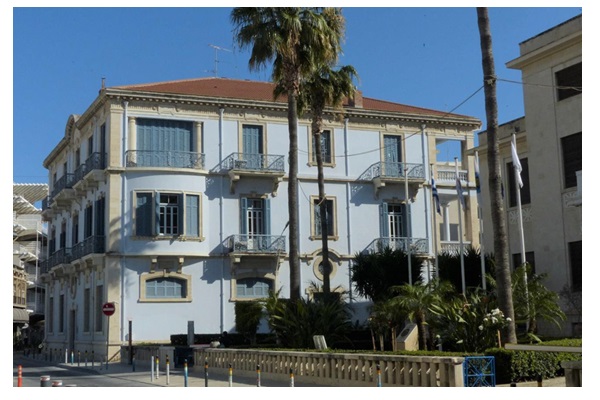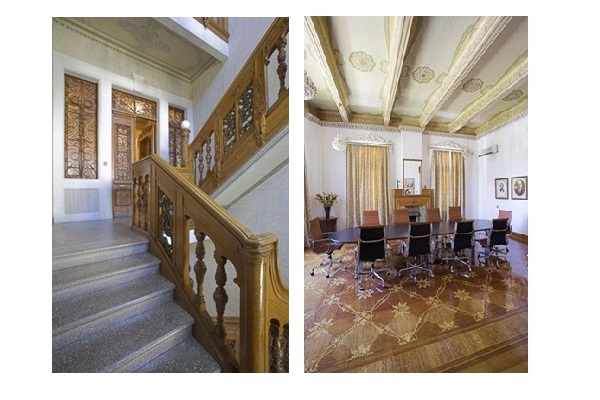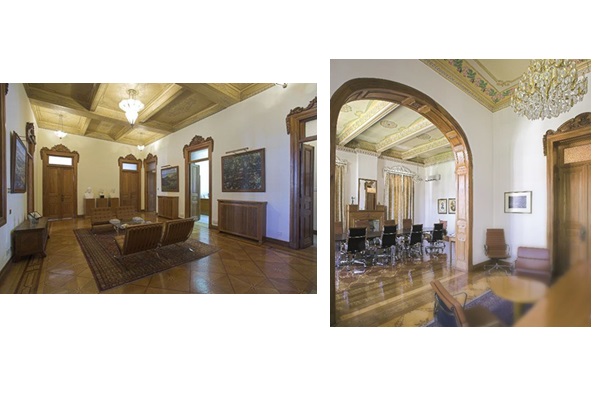Lanitis Group Head Offices Building
The building of Lanitis E.C. Holdings Head Offices
Right next to the building of City Hall of Limassol, there is another impressive three-storey building, the well-known “Tripato of Lanitis”, one of the most impressive, preserved building in the city.
At the end of the 19th century, Panagis Sykas used to come to Limassol from Lania village, to sell his agricultural products that grew in his own land at the village. His clients in Limassol knew him as "Panagis Lanitis". This humble person from Lania village, without taking any education, left Lania and settled permanently in Limassol at the end of the Turkish rule, in 1878, for a better life. He married Angelika Kyza and had five children, three daughters and two sons.
Having an entrepreneurial spirit, Panagis together with his sons Nicolas and Costas, managed to establish in 1896 the company N. P. Lanitis & Co Ltd, at a time when Limassol began to experience a fast-paced development. They traded any kind of local agricultural product and started exporting carobs, almonds, wine, raisins, and other agricultural products. The activities of the N. P. Lanitis company expanded over the years in many different economic sectors.
The three-storey house on Archbishop Kyprianou Street, was built by Costas P. Lanitis in 1926. The architectural plans of the house were probably designed by the architect Zacharias Vondas. As stated by Tasos Andreou, in his book "Lemesos Anadromi Mnimis", several elements found in this building, are also found in other buildings in the city of Limassol designed by Vondas. Later, some additional renovations were made in the three-story building by the Greek civil engineer Petros Vrettos.
The building has impressive decorative details on the exterior walls on all floors, reminding the neo-baroque architectural style of 19th century, as well as wonderful ironwork on the balconies and on the main wooden doors of the building.
When the building was completed, the offices of N.P. Lanitis company were based on the ground floor. The two top floors were converted into large residences.
Entering from the northern entrance of the building you face an imposing wooden staircase with decorative carvings on the balustrades with thick wooden columns.
In the large rooms of the first and second floors, the magnificent designs that decorate the ceiling spaces, were painted by the well-known painter and iconographer Othonas Giavopoulos, grandfather of the former President of the Republic of Cyprus George Vassiliou and the actress Monica Vassiliou. In each room the design on the ceiling is different.
The equally impressive, elegant floors of the building are covered with parquet from Vienna, similar to those used in the Opera of the Austrian capital.
At the back of the building the large terraces are supported by Tuscan columns.
In old photographs of the three-storey building we can see English flags hanging from the balconies to celebrate the coronation of King George V of England in 1937. British soldiers also lined up on the vacant plot, north of the house, where the City Hall of Limassol was later built in 1943.
In the early 1960s, the offices on the ground floor were converted into commercial stores, one of which was rented by the well-known Armenian, Kaloust, who had his fabric store there for years. Next door was the store MARGOT, by Marika Markantonaki originally from Egypt, with knitting hair, threads, embroidery canvases and various other items related to sewing and embroidery and a store with electrical goods by Andreas Silvestrou.
Several years later the Lanitis Company decided to renovate the building and the shopkeepers on the ground floor of the “Tripato” left the building.
The Lanitis Company entrusted the restoration of the building to its original form, to the architectural office of Elli Constantinidou. The restoration works of the building was completed in September 1992.
The Head Offices of the Lanitis Group were housed immediately after its renovation on the ground floor and the first floor of the building. The second floor continues to be the residence.
The “Tripato Lanitis” building is the host of the Consulate of Netherlands, Belgium and Germany, due to the close commercial relations maintained by the N. P. Lanitis Company with foreign countries, hence the shields on the balconies of the building.
Sources:
Research & Article by Eratos Kantouna (Website of the Coordinating Council of Cultural Organizations of Limassol)
Andreou, T.A. (2009), Limassol, Retrospective of Memory, Nostos Publications, Limassol
Patticheio Historical Archive and Study Center of Limassol
Photos





